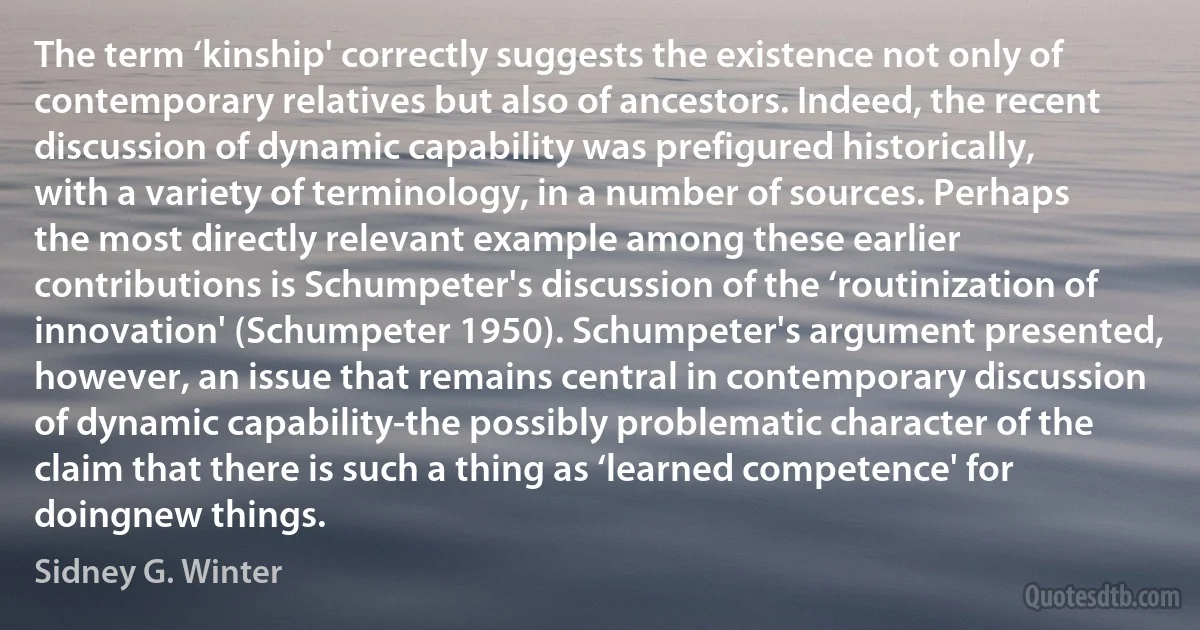Variety Quotes - page 19
First, technical perfection as something natural. Second, an insight into the development of the piano sound, as perfected by the pianist-composers of the late 19th and early 20th centuries, composers who understood the piano both as a human voice ... and as an orchestra with which they could produce a variety of colors. Third, the need to learn how to use every aspect of our new instruments, which are richer in sound. Fourth, the importance of differentiation.

Ivo Pogorelić
Part of the charm of synthetic organic chemistry derives from the vastness of the intellectual landscape along several dimensions. First, there is the almost infinite variety and number of possible target structures that lurk in the darkness waiting to be made. Then, there is the vast body of organic reactions that serve to transform one substance into another, now so large in number as to be beyond credibility to a non-chemist. There is the staggering range of reagents, reaction conditions, catalysts, elements, and techniques that must be mobilized in order to tame these reactions for synthetic purposes. Finally, it seems that new information is being added to that landscape at a rate that exceeds the ability of a normal person to keep up with it. In such a troubled setting any author, or group of authors, must be regarded as heroic if through their efforts, the task of the synthetic chemist is eased.

Elias James Corey
Only in a very static profession can one be trained to slot in immediately to an available job, and our profession is far from static. It is more beneficial for the students to give them a generalised grounding in a wide variety of professional activities and concerns, so that they will have some background knowledge for no matter what job is first available. For those who seek it, our subject also has its cultural value, which can contribute to a general education.

Brian Campbell Vickery
Information practice is concerned with facilitating the interaction between knowledge seekers – through channels – with knowledge (personal and recorded). Stepping back from practice, we may see the role of the science as exploring the characteristics of people and their "information behaviour”, the features of knowledge records of every kind, the variety of channels (oral, written, printed, graphic, digital) that may be used to transmit information, and how the three elements interact.

Brian Campbell Vickery
Being an athlete, you have to consider whether your meals have enough of everything you need. As a vegetarian, you are forced to be creative, which I find makes me more adventurous with my cooking. Following a strict diet based on performance can be tedious, but because I enjoy the variety of my diet, it makes it easier to follow. ... If any cyclists are thinking of becoming vegetarian, then I would suggest giving it a go. There's definitely no harm in trying it! Be prepared to be experimental and open to new foods – you can't just take out meat from your existing meals, you need to learn new ways of eating.

Lizzie Deignan
As collage technique replaced oil paint, the cathode ray tube will replace the canvas. Someday artists will work with capacitors, resistors, and semiconductors as they work today with brushes, violins and junk. There are 4,000,000 dots per second on one television screen, just think of the variety of images you can get. It's so cool. It's like going to the moon.

Nam June Paik
Having conflicting goals, dedicating resources to unconnected targets, and accommodating incompatible interests are the luxuries of the rich and powerful, but they make for bad strategy. Despite this, most organizations will not create focused strategies. Instead, they will generate laundry lists of desirable outcomes and, at the same time, ignore the need for genuine competence in coordinating and focusing their resources. Good strategy requires leaders who are willing and able to say no to a wide variety of actions and interests. Strategy is at least as much about what an organization does not do as it is about what it does.

Richard Rumelt
There is always the danger that the use of traditional grammatical terms with reference to a wide variety of languages may be taken to imply a secret belief in universal grammar. Every analysis of a particular ‘language' must of necessity determine the values of the ad hoc categories to which traditional names are given. What is here being sketched is a general linguistic theory applicable to particular linguistic descriptions, not a theory of universals for general linguistic description.

John Rupert Firth
At present, a nonspecialist might well regard the Wiener-Kolmogorov theory of filtering and prediction [1, 2] as "classical' - in short, a field where the techniques are well established and only minor improvements and generalizations can be expected.
That this is not really so can be seen convincingly from recent results of Shinbrot [3], Stceg [4], Pugachev [5, 6], and Parzen [7]. Using a variety of methods, these investigators have solved some long-stauding problems in nonstationary filtering and prediction theory. We present here a unified account of our own independent researches during the past two years (which overlap with much of the work [3-71 just mentioned), as well as numerous new results. We, too, use time-domain methods, and obtain major improvements and generalizations of the conventional Wiener theory. In particular, our methods apply without modification to multivariate problems.

Rudolf E. Kálmán
Towards the end of his life, Schumpeter re-painted his picture of capitalist development on an even broader canvas. In Capitalism, Socialism and Democracy (Schumpeter 1950), he offered a complex, multifaceted argument that the type of capitalism he had earlier described might be passing from the historical scene, morphing by small degrees into some variety of socialism.

Sidney G. Winter
In the 1920... the closed body rose to dominance, the Model T came to an end, and the upgrading of cars began. The events of the past few years of car market, I believe, have validated the General Motors product policy that we formulated in 1921. John Gordon, president of General Motors, recently observed that our slogan of "a car for every purse and purpose” is as appropriate as ever; indeed, we have never offered our customers greater variety and choice than we do today. In the 1963 model year the industry offers 429 models of domestically produced cars, compared with 272 in 1955; General Motor alone had 138 models in 1963, compared with 85 in 1955.

Alfred P. Sloan
One great part of the joculator's profession was the teaching of bears, apes, horses, dogs, and other animals, to imitate the actions of men, to tumble, to dance, and to perform a variety of tricks, contrary to their nature; and sometimes he learned himself to counterfeit the gestures and articulations of the brutes.

Joseph Strutt



